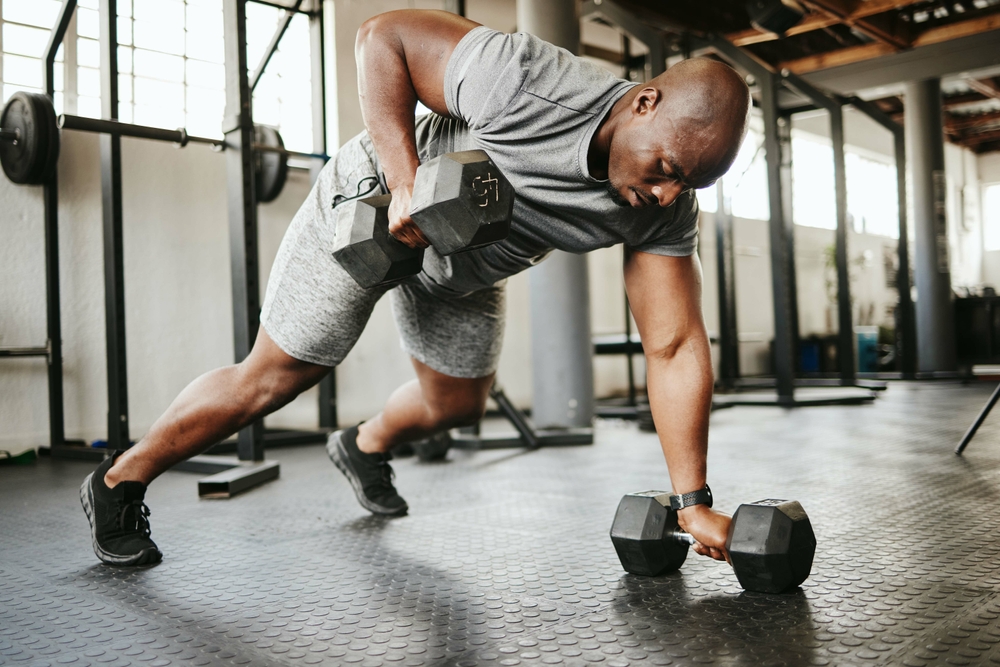Living with arthritis can feel like your body is working against you, stealing joy from everyday tasks. Simple movements such as opening a jar, climbing stairs or even standing for long periods can trigger discomfort or pain. But for many people with arthritis, one unlikely ally has emerged to restore strength, reduce pain and improve quality of life: weight training.
This form of physical activity, once reserved for bodybuilders and athletes, is now gaining recognition among health professionals as an effective way to ease the challenges of arthritis. While it may seem counterintuitive to lift weights when your joints ache, structured resistance training can actually be a powerful remedy.
Why weight training matters
The wear and tear that arthritis causes—especially osteoarthritis—weakens not only the joints but also the muscles around them. As muscles deteriorate, they offer less support, which places even more strain on the joints.
Stronger muscles act like shock absorbers. They help stabilize joints and redistribute the physical forces that typically stress cartilage and bone. When done consistently and properly, weight training doesn’t just slow the progression of arthritis—it can also reverse some symptoms.
Building strength safely
A common concern for those living with arthritis is that weight training might aggravate symptoms. But modern training plans for people with arthritis are designed to be joint-friendly. The goal isn’t to lift heavy—it’s to build functional strength through controlled movements using lighter weights or resistance bands.
Exercises such as leg presses, seated rows and bicep curls can be modified to avoid stressing vulnerable joints. By using machines, resistance bands or even water resistance, people can gain strength safely and gradually. Warm-ups and stretching before training sessions are critical to improving flexibility and reducing injury risk.
The evidence for improvement
Several studies have documented the benefits of weight training for individuals with arthritis. Research published by the National Institutes of Health found that older adults with knee osteoarthritis who participated in a 16-week weight training program reported less pain and stiffness, improved balance and greater mobility.
In another clinical trial, individuals with rheumatoid arthritis who followed a moderate-intensity resistance training program experienced increased muscle strength, reduced disease activity and improved emotional well-being.
Long-term benefits
Improvement isn’t instant, but it’s transformative. Over time, people with arthritis who engage in weight training report:
- Decreased joint pain through reduced inflammation and improved support
- Improved joint function with increased stability and range of motion
- Increased bone density, important for those at risk of developing osteoporosis
- Elevated mood from endorphins released during resistance training
- Enhanced independence and ability to perform daily tasks
The emotional reward of being able to walk further, cook longer or play with grandchildren without debilitating pain cannot be overstated.
Safe training strategies
To experience the full benefits of weight training without risking flare-ups or injury, individuals must approach it with a thoughtful plan.
Get medical approval
Before starting any new fitness regimen, talk with a doctor or physical therapist. They can identify any contraindications and help tailor a safe plan.
Start small
Begin with light weights or resistance bands and gradually increase intensity. Overdoing it early can lead to joint stress or injury.
Focus on form
Proper technique is key. Controlled, steady movements are better than quick or jerky motions.
Rest adequately
Allow muscles and joints to heal and strengthen between sessions. Most experts recommend weight training two to three times a week with at least one rest day in between.
Include complementary activities
Combine weight training with low-impact exercises like swimming, walking or yoga to enhance flexibility, cardiovascular health and joint mobility.
Results people experience
Many individuals with arthritis find that structured weight training programs transform their capabilities. Those who consistently follow arthritis-friendly resistance training often report significant improvements after several months.
For people with osteoarthritis in weight-bearing joints like knees or hips, the benefits can be particularly noticeable. Many find themselves stronger, walking better and requiring less pain medication. The goal isn’t bodybuilding—it’s regaining the ability to perform everyday activities like gardening, shopping or spending time with family without debilitating pain.
These stories reflect a common theme among those who take up resistance training. It’s not about aesthetics—it’s about reclaiming control over their bodies and lives.
Emotional and mental benefits
Living with arthritis takes more than a physical toll—it can erode your sense of self. Chronic pain often leads to anxiety, frustration and depression. But weight training creates small, daily victories that rebuild resilience.
Each session becomes proof that the body can adapt and that progress is still possible. The consistency, discipline and endorphin release from regular strength training provide a mental boost that medication alone often can’t deliver.
For many people, weight training transforms arthritis from a life sentence into a manageable condition. It fosters a mindset of growth instead of decline.
Finding support
Whether it’s a community class tailored for seniors, a personal trainer certified in arthritis support or a virtual fitness program, having the right environment makes all the difference.
Many gyms and local YMCAs now offer specialized arthritis fitness programs that focus on strength, balance and flexibility. For those who prefer working out at home, there are plenty of online options with guided workouts using household items or light weights.
The right support system makes training more enjoyable, safe and sustainable.
Addressing common misconceptions
Some myths prevent people from exploring weight training:
- “I’m too old to start lifting weights” — People of all ages, especially seniors, can benefit from strength training
- “Lifting weights will wear down my joints faster” — In reality, strengthening muscles reduces pressure on joints
- “I need a gym membership to do it right” — Many exercises can be done at home with resistance bands, light dumbbells or even water bottles
- “I don’t want to get bulky” — Gaining significant muscle mass requires intense training and specific nutrition that aren’t part of arthritis-friendly programs
Reclaiming movement and joy
Living with arthritis doesn’t mean surrendering your strength. Weight training isn’t a cure, but it’s a lifeline—an evidence-backed tool that supports the body and uplifts the spirit. Each lift, each session, each bit of progress builds a foundation for a more active, fulfilling life.
Through small, consistent steps, people can reduce pain, move more freely and rediscover moments of joy they thought were lost. Weight training doesn’t just improve arthritis symptoms—it helps restore a sense of purpose, movement and confidence.
The journey starts with one lift. The reward is a life with less pain and more freedom.
This story was created using AI technology.














